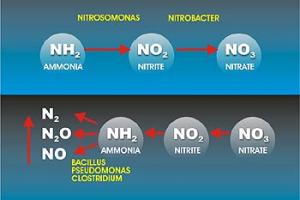Advantages & Disadvantages of Comminutors
Comminutors are mechanical devices used to pre-treatment wastewater before it enters the primary treatment process. These devices are designed to reduce the size of solid waste materials and debris in wastewater, making them easier to handle and treat. This article will explore the advantages and disadvantages of using comminutors in wastewater treatment.
Advantages of Comminutors:
-
Reduced Maintenance Costs: One of the primary advantages of comminutors is that they can reduce the amount of solid waste and debris in wastewater, reducing the maintenance required for downstream equipment. This can result in significant cost savings over time.
-
Improved Efficiency: Comminutors can improve the efficiency of downstream treatment processes by reducing the size and volume of solid waste and debris. This can make it easier for the downstream equipment to handle the wastewater and improve the overall efficiency of the treatment process.
-
Improved Water Quality: Comminutors can also improve water quality by reducing the amount of solid waste and debris that enters the treatment process. This, in turn, can reduce the amount of suspended solids in the treated water, resulting in cleaner water for discharge into the environment.
-
Reduced Odors: Comminutors can also reduce the production of odors by reducing the amount of solid waste and debris in the wastewater. This can improve the working conditions for workers and reduce odor complaints from nearby communities.
Disadvantages of Comminutors:
-
High Capital Costs: One of the main disadvantages of comminutors is that they can be expensive to install and maintain. This can be a significant barrier to entry for smaller wastewater treatment plants or facilities with limited budgets.
-
Increased Energy Consumption: Comminutors require energy to operate, which can increase the overall energy consumption of a wastewater treatment facility. This can harm the environment and increase the operating costs of the facility.
-
Maintenance Requirements: Comminutors require regular maintenance to operate at peak efficiency. This can include replacing blades or screens, cleaning the unit, and performing routine inspections. Failure to maintain the comminutor can result in decreased efficiency or complete failure.
-
Potential for Equipment Damage: Comminutors can be prone to damage if they are not properly maintained or misused. This can result in costly repairs or replacements, a significant financial burden for a wastewater treatment facility.
Conclusion:
Comminutors are an important component of many wastewater treatment processes. They can reduce the amount of solid waste and debris in wastewater, improving the efficiency of downstream treatment processes and treated water quality. However, they can also be expensive to install and maintain, require energy to operate, and can be damaged if improperly maintained. The decision to use comminutors in wastewater treatment should be based on a thorough evaluation of the costs and benefits, as well as the specific needs of the facility.





